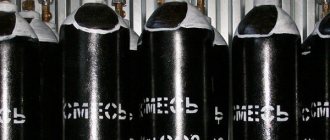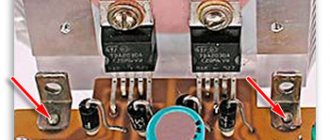NAKS is
NAKS is a self-regulatory organization Non-Profit Partnership “National Welding Control Agency”.
NAKS objectives:
- Development of standards, methods and regulations for certification of welding process production.
- Determination of the expert composition of the commission on types and areas of production certification.
- Conducting expert control over newly formed and existing certification centers.
- Development of methodological recommendations, consulting on the functioning of centers
- Accumulation and generalization of domestic and international experience in the field of production certification. Development of proposals for improving the certification system.
- Selection, formation and implementation of technical areas in the Welding Certification System (CAC).
- Implementation of coordination policy in the activities of SASv.
- Preventing the introduction and application of norms, methods, regulations and procedures not reflected in the activities of SASv.
What is NAKS
Every welding specialist knows what NAKS stands for. This abbreviation stands for National Welding Inspection Agency. The institution certifies welders who want to confirm their high level of professionalism and apply for work with critical structures. Since a NAKS welder has a larger salary than an uncertified specialist, certification of welders is a fairly popular procedure.
Certification can be carried out for:
- Working personnel.
- Equipment and tools.
- Enterprises and organizations.
Employees of enterprises can undergo mandatory examinations or undergo this procedure voluntarily, hoping for a more prestigious position. Equipment, tools, materials must be certified if they are used in servicing critical areas - metallurgical, mining, boiler, gas equipment, etc. Enterprises are subject to certification if they plan to participate in a major project or change technology.
Why is certification needed?
A welder who has passed the NAKS certification is a highly qualified specialist authorized to carry out work in high-risk conditions:
- gas pipeline; pipeline;
- closed space of storage tanks;
- ship's hold;
- a blast furnace or open hearth furnace is not the entire list of objects.
The danger arises from the presence of flammable substances that can cause a fire or explosion.
Certification is carried out so that the specialist remembers his theoretical knowledge, confirms his practical skills, and learns new things in the field of welding.
NAKS certification procedure
The knowledge confirmation course consists of several stages:
- Preparation of necessary documents (the list depends on the level being passed and the specialist’s knowledge):
- application for certification;
- document on special education;
- certificate of training courses in a specialized profession (advanced training, obtaining the next rank);
- confirmation of general experience in the specialty, extract from the work book;
- a few photos;
- confirmation of completion of safety training within Rostechnadzor (copies of protocols);
- passing a medical examination.
- Conducting the first practical exam. If the results are unsatisfactory, the examinee is disqualified from further examination. The next retake will come in a month, during which it is necessary to prepare, undergo additional training and instruction.
- Admission to a general and special exam means that a welder performs a number of practical works, adheres to safety regulations, and confirms knowledge of labor safety standards. A specialist can be certified in several types of welding operations at once.
How to get certified
Before receiving a certification certificate, each NAKS welder must sequentially complete the following points:
- Prepare a package of documents. It includes papers confirming your education, current rank and length of experience, as well as a medical certificate and two photographs measuring 3 by 4 cm. If you have completed training courses, then you should also include a certificate of completion.
- Provide this package to the nearest regional center and fill out an application to take the exam.
- Wait for the results of the review. As a rule, the waiting time does not exceed 3 days. The result is provided to the applicant in writing and contains an indication of the date for which the tests are scheduled. If the examination is refused, the reasons for the refusal must be indicated.
- Pass the theoretical exam. It usually consists of 15-20 questions.
- Pass the practical exam.
- Wait for the certification results. If the exams were passed successfully, then within 2 weeks you will receive a NAKS welder certificate, and your data will be entered into the electronic and paper registers. If the result is unsatisfactory, then you can try again within 1 to 6 months from the date of passing the exam. In this case, you will need to pay the full cost of the exam again.
Who can and should undergo certification
Employees of a hazardous facility (controlled by Rostekhnadzor) at which installation operations are supposed to be carried out or are undergoing must be certified. Specialists, in accordance with the standards, are assigned certain NAKS levels:
The type of certification directly depends on the industry sector.
The expert commission cannot cancel or annul the qualification category of a welding specialist.
Obtaining NAKS certification
Certification is carried out in all regions of the Russian Federation. Training and examinations are assigned to NACS centers or points. The program must include:
- Study of a set of measures for labor protection and safety in welding production.
- Training in the technology of making welded joints and deposited layers of metal.
- Type of materials for welding, equipment and fixtures.
- Methods for monitoring the quality of a weld.
- Methods for preventing or eliminating defects that have arisen.
Documents based on the results of the inspection
Upon completion of the course, a specialist who has successfully completed the training will be issued:
- NAKS certification certificate. The document is valid throughout the Russian Federation.
- A copy of the protocol on passing the next type of certification (primary, periodic, extraordinary or additional).
- Certificate of preliminary preparation before passing the test.
The data is entered into the NAKS register. If, for any reason, the above documents are lost, you can confirm that the verification has been completed by contacting the EDO NAKS (electronic document management).
IMPORTANT! Welders are allowed only to those types of work that are included in the certification certificate of a welding specialist.
Certification of welding production specialists is carried out in order to establish the sufficiency of their theoretical and practical training, test their knowledge and skills and grant the right to welding production specialists to perform work at hazardous production facilities.
Certified welding production specialists are allowed to perform those types of activities that are specified in their certification certificates.
Certification of welding production personnel is carried out at the following levels of professional training:
- Level II - certified master welder, supervises welding work, can hold the position of foreman, foreman, site manager, workshop manager, etc. ( manager ), is guided by the requirements of production and technological documentation developed by a Level III specialist;
- Level III - certified welding technologist, develops production and technological documentation intended for welders and their managers, can hold the position of technologist, engineer, department head, etc. ( specialist )
Employees who are directly involved in the work: welders, machine operators, mechanics, etc., cannot be certified to level II or III.
Certification of specialists takes place at the location of the certification center.
A candidate applying for any level must have education and work experience in accordance with the requirements given in tables 1, 2.
Table 1 - Requirements for the candidate’s education required for admission to certification
| Level | Document issued before 2013 | Document issued after 2013 |
| II |
OR OR OR OR OR |
OR OR OR OR |
| III |
OR OR |
OR OR |
Table 2 - Requirements for the minimum work experience in the specialty required for admission of a welding specialist to primary certification
| General education | Work experience , months | ||
| Level II certification | Level III certification | ||
| uncertified | Level II specialist | uncertified | |
| Higher technical degree in welding production | 6 | 6 | 18 |
| Secondary technical in welding production | 9 | 9 | 24 |
| Higher technical, secondary technical | 12 | 12 | 36 |
| Average | 36 | — | — |
Dashes - the candidate cannot be certified at the appropriate level.
Before certification of welding production specialists, object-oriented consultations are carried out in accordance with the declared level and direction of production activity.
Certification of welding production specialists of levels II and III is carried out in the direction of their production activities.
Certification of welding production specialists at levels II and III is divided into primary, additional, periodic and extraordinary.
The certification carried out for the first time is considered primary.
Welding production specialists who have passed the initial certification undergo additional certification in the following cases:
- admission to types of production activities not specified in their certification certificates;
- when new regulatory documents of the Gosgortekhnadzor of Russia are put into effect;
- during a break in work in the specialty for more than one year.
Welding production specialists undergo periodic certification in order to extend the validity of their certification certificates for performing relevant types of production activities.
Welding production specialists undergo extraordinary certification before they are allowed to work after being removed from work at the request of the employer or representatives of Technical Supervision in accordance with current legislation.
Certified persons receive certification certificates in the established form.
The validity period of the certificate during initial certification is 3 years.
Certification includes two exams:
- general;
- special, including a practical task.
Conducting simultaneous certification of welding production specialists is permitted for no more than three groups of dangerous technical devices. At the same time, a separate special exam must be passed for each group of dangerous technical devices.
Examinations are conducted in written form. By decision of the commission, an additional interview may be conducted with the certified person.
A specialist is considered to have passed the exams if he correctly answered at least 80% of the questions asked of him in each exam and successfully completed practical tasks in a special exam, taking into account the results of an additional interview.
A specialist is considered certified upon successful completion of all exams.
If a specialist fails one or two exams, he is allowed to retake the failed exams within 6 months, but not earlier than one month from the date of the first exam.
In case of repeated failure to pass the exam, the specialist is considered to have failed the certification. The results of previously passed exams will be cancelled.
Based on the certification results, the commission draws up a protocol for each certified welding specialist.
Contents of the certificate
The document reflects:
- Scope of certification for the NAKS category.
- Method (type) of welding.
- Type of welded parts according to NAKS.
- Type (type) of welding seam.
- Group of material to be welded.
- Welding material (type of electrode, wire).
- Part thickness range.
- Minimum product diameter.
- Spatial position of the weld.
- Type (type) of connection.
Validity period of the certificate:
- Welder - 2 years.
- NAKS specialist level 2 (3rd) - 3 years.
- NAKS specialist level 4 - 5 years.
What does NAKS take into account during inspections?
In addition to the specialist’s knowledge, workplaces, equipment, types of production, and welding methods are inspected. The latter directly concerns the welder, since control of his knowledge is carried out in accordance with the types of operations that are performed according to the technological process:
Any welding process involves the use of a certain type from the group of welded materials according to NAKS. The list consists of 22 subgroups and includes:
- black metals;
- carbon steels;
- low alloy and alloy steels;
- high alloy steels;
- reinforcing steels for reinforced concrete structures;
- cast iron;
- non-ferrous metals and alloys based on them;
- various polymers and materials not included in the general list.
NAKS groups are designated by letters: letter and number. For example: M11 is a subgroup of high-alloy steels of the austenitic or austenitic-ferritic subclasses.
A welder who has successfully passed the inspection is allowed to work with products and parts classified into the NAKS groups of dangerous technical devices:
- PTO (handling and transport equipment);
- KO (boiler equipment);
- GO (gas equipment);
- NGDO (oil and gas production equipment);
- MO (metallurgical equipment);
- NAKS OKVNP (equipment for chemical, petrochemical, oil refining and fire and explosion hazardous industries);
- GDO (mining equipment);
- OTOG (equipment for transportation of dangerous goods);
- SK (building structures);
- KSM (steel bridge structures).
A complete list of groups of dangerous technical devices NAKS is given in the regulatory documents of the self-regulatory organization.
LIST OF DANGEROUS TECHNICAL DEVICES
| LIST OF GROUPS OF DANGEROUS TECHNICAL DEVICES |
Handling and transport equipment (H&T)
|
Boiler equipment (BO)
|
Mining equipment (GDO)
|
Equipment for the transportation of dangerous goods (DGT)
|
Gas equipment (GO)
|
Equipment for chemical, petrochemical, oil refining and fire and explosion hazardous industries (OHNVP)
|
Metallurgical equipment (MO)
|
Oil and gas production equipment (OGDO)
|
Building construction
|
Steel bridge structures
|
NACS goals
The audit covers a fairly wide range of issues:
- Welding process technology. The goal is to confirm the technical and technological capabilities of the enterprise to carry out the declared work. Certification is a mandatory procedure for a company operating in the Customer’s territory. After successfully passing the test, a certificate is issued confirming the company’s ability to use the declared welding technology. The document is valid for 4 years.
- Equipment and materials. The goal is to check the compliance of the technical condition of the equipment, properties and technical characteristics of welding materials with the data specified in the accompanying documentation. If the certification commission makes a positive decision, a NAKS certificate is issued:
- valid for 3 years for mass-produced materials;
- 1 year - for a pilot batch.
Such checks are necessary, since the NAKS technical device groups include various equipment that require certain operating methods. You will need:
- appropriate training of specialists; technical serviceability of the welding machine;
- compliance with technological processes;
- compliance with safety regulations.
On the other hand, the NAKS group has gained authority among production workers. Therefore, enterprises and specialists that have successfully passed certification in a self-regulatory organization have the right to count on priority when receiving an order for welding work.
List of groups of technical devices of hazardous production facilities
List of groups of technical devices of hazardous production facilities, welding (surfacing) of which is carried out by certified welders using certified welding materials, welding equipment and welding (surfacing) technologies
| Group of technical devices | List of technical devices included in the group |
| Handling and transport equipment (H&T) |
|
| Boiler equipment (BO) |
|
| Gas equipment (GO) |
|
| Oil and gas production equipment (OGDO) |
|
| Metallurgical equipment (MO) |
|
| Equipment for chemical, petrochemical, oil refining and fire and explosion hazardous industries (OHNVP) |
|
| Mining equipment (GDO) |
|
| Equipment for the transportation of dangerous goods (DGT) |
|
| Building structures (SC) |
|
| Steel Bridge Structures (SBS) |
|










